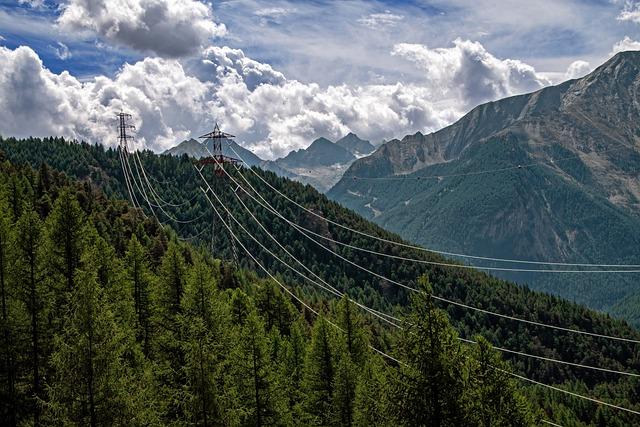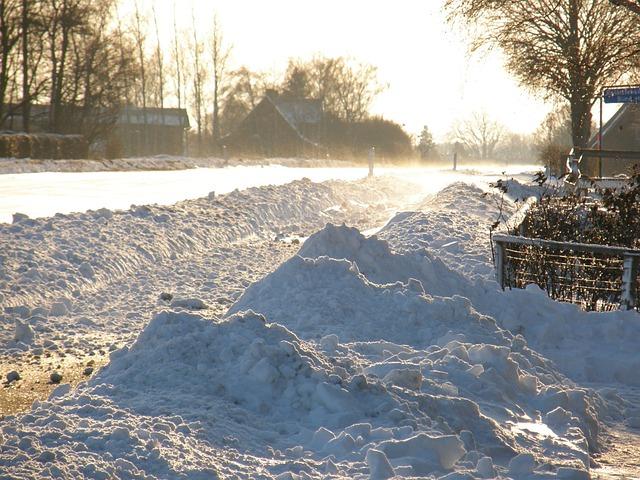The Importance of Tree-Lined Avenues

Trees play a crucial role in shaping our urban environments, and one of the most visually striking ways they do so is through tree-lined avenues. These verdant paths not only enhance the aesthetics of our cities but also provide a host of benefits to both the environment and the community. In this article, we will explore the significance of tree-lined avenues, delving into their impact on biodiversity, air quality, and overall well-being. Join us as we delve into the importance of these green corridors in our urban landscape [source].
Table of Contents
- Benefits of Tree-Lined Avenues for Urban Cooling
- Enhancing Air Quality and Reducing Pollution with Tree-Lined Avenues
- Economic Value of Tree-Lined Avenues for Property Owners
- Promoting Biodiversity and Wildlife Conservation through Tree-Lined Avenues
- Sustainability and Climate Change Mitigation with Tree-Lined Avenues
- Q&A
- Conclusion
Benefits of Tree-Lined Avenues for Urban Cooling
The presence of tree-lined avenues in urban areas plays a crucial role in enhancing the phenomenon of urban cooling, offering a myriad of benefits to both the environment and the community. One significant advantage is the reduction of flooding and polluted runoff, as urban trees help absorb excess water and minimize the risk of water accumulation on streets [1]. Additionally, these green spaces act as natural air purifiers by filtering out harmful pollutants, contributing to improved air quality in cities [3].
Moreover, tree-lined avenues have the capacity to lower temperatures within urban environments by providing shade and releasing water vapor through evapotranspiration, ultimately cooling the surroundings [2]. This cooling effect helps mitigate the urban heat island effect, making streets and homes more comfortable during hot weather. By creating cooler microclimates, trees contribute to a more pleasant and livable urban landscape, offering respite from the heat to residents and visitors alike.
Enhancing Air Quality and Reducing Pollution with Tree-Lined Avenues
Tree-lined avenues play a crucial role in enhancing air quality and reducing pollution in urban environments. Research has shown that trees and vegetation in parks can directly remove pollutants from the air, contributing to cleaner and healthier surroundings [1]. Not only do trees help in the removal of harmful substances, but they also aid in lowering air temperatures and decreasing building energy usage, leading to a significant reduction in pollution levels.
One of the primary ways trees clean the air is by absorbing pollutants such as carbon dioxide, sulfur dioxide, and nitrogen oxides, while releasing oxygen [2]. By strategically planting trees along avenues within urban areas, we can create natural barriers that help filter out these pollutants and improve overall air quality. Furthermore, tree planting initiatives offer a practical and sustainable solution to combatting air pollution, with benefits that extend beyond just cleaning the air.
Implementing a simple tree planting framework can have a lasting impact on climate, air quality, and public health in urban spaces [3]. Collaborative efforts to plant trees along avenues not only enhance the aesthetic appeal of the surroundings but also promote a healthier environment for residents. Tree-lined avenues serve as a natural green infrastructure that contributes to the well-being of communities while mitigating the harmful effects of pollution, making them an essential component in our efforts to create sustainable and livable cities.
Economic Value of Tree-Lined Avenues for Property Owners
When it comes to property owners, the economic value of tree-lined avenues cannot be understated. Research has shown that having trees along streets can significantly increase the income of local businesses, with those on tree-lined streets experiencing up to 14% higher income streams compared to those without [2]. This uptick in revenue can be attributed to the aesthetic appeal and enhanced customer experience that trees provide, drawing more foot traffic and ultimately boosting profitability.
Moreover, the presence of street trees can also have a positive impact on property values. Homes and buildings situated along tree-lined avenues are often perceived as more desirable and thus command higher sale prices and rental rates. The shade, beauty, and sense of tranquility that these trees offer create a more attractive living or working environment, enticing potential buyers and tenants [1].
| Benefits of Tree-Lined Avenues for Property Owners: |
|---|
| 1. Increased foot traffic and customer engagement |
| 2. Elevated property values and rental income |
| 3. Enhanced aesthetic appeal and curb appeal |
Promoting Biodiversity and Wildlife Conservation through Tree-Lined Avenues
Tree-lined avenues play a crucial role in promoting biodiversity and wildlife conservation by providing essential habitats and corridors for various species to thrive. The presence of trees along avenues creates a rich ecosystem that supports a diverse range of flora and fauna, contributing to the overall biodiversity of the area. These green corridors not only provide shelter and nesting sites for wildlife but also serve as food sources and breeding grounds, essential for maintaining healthy populations.
Moreover, tree-lined avenues help mitigate the impacts of urbanization and deforestation by offering a green space where wildlife can coexist with human activities. By preserving and planting trees along avenues, we can create sustainable environments that support wildlife conservation efforts and promote a harmonious relationship between humans and nature. These green spaces also contribute to the overall well-being of communities by enhancing air quality, reducing noise pollution, and providing recreational opportunities for residents and visitors alike.
Sustainability and Climate Change Mitigation with Tree-Lined Avenues
Tree-lined avenues play a vital role in sustainability and climate change mitigation efforts within urban areas. These lush green corridors not only enhance the aesthetics of our cities but also deliver tangible benefits that contribute to a healthier environment and community well-being.
**Benefits of Tree-Lined Avenues:**
- **Air Quality Improvement:** Trees act as natural air purifiers, filtering out pollutants and carbon dioxide, thereby improving air quality [1].
- **Climate Regulation:** By providing shade and reducing the urban heat island effect, street trees help regulate temperatures, mitigating the impact of climate change [3].
- **Water Management:** Tree roots absorb excess rainwater, reducing stormwater runoff and aiding in flood prevention [2].
- **Biodiversity Support:** Tree-lined avenues create habitats for various species of birds, insects, and other wildlife, enhancing urban biodiversity.
| City Benefits | Tree Contributions |
|---|---|
| Improved Air Quality | Filtering pollutants and carbon dioxide. |
| Climate Regulation | Reducing urban heat island effect. |
| Water Management | Absorbing excess rainwater to prevent flooding. |
Embracing and nurturing tree-lined avenues in our urban landscapes is not just a matter of beauty but a significant step towards building sustainable, resilient cities that actively combat the challenges of climate change and contribute to a healthier future for all.
Q&A
Q: What are the benefits of having tree-lined avenues?
A: Tree-lined avenues offer numerous benefits, such as increasing property value, enhancing the aesthetic appeal of neighborhoods, providing shade and cooling effects, improving air quality, and creating wildlife habitats. Trees also contribute to a sense of tranquility, reduce noise pollution, and encourage outdoor activities like walking and cycling. For more information, you can refer to [1] and [3].
Q: What are some recommended specimen trees for planting along avenues and drives?
A: When selecting trees for avenues and drives, it is essential to consider factors like the space available, soil conditions, and overall design aesthetics. Some recommended specimen trees for this purpose include London plane trees, cherry trees, oak trees, maple trees, and honey locust trees. For a more detailed list of suggested trees suitable for lining avenues, you can visit [2].
Conclusion
In conclusion, the importance of tree-lined avenues cannot be overstated. From enhancing the aesthetic appeal of urban spaces to providing shade, improving air quality, and promoting physical and mental well-being, trees play a vital role in creating healthier and more sustainable environments. As discussed in various sources, such as the benefits of street trees in urban spaces[1], the significance of tree plantation for clean air and good food[2], and the importance of tree plantation for a better future[3], it is evident that investing in tree-lined avenues is a worthwhile endeavor. By recognizing and valuing the benefits trees bring to our surroundings, we can contribute to a greener, more resilient future for generations to come.
Simpsons Tree Services, Servicing Melbourne’s North Eastern Suburbs
Book a quote online at www.simpsonstrees.com.au


